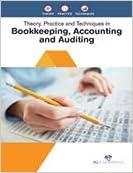Question
Comparative Income Statement For the Years Ended December 31, 20X3 and 20X2 20X3 20X2 Net sales $1,000,000 $745,000 Cost of goods sold 668,000 425,000 Gross
Comparative Income Statement For the Years Ended December 31, 20X3 and 20X2 20X3 20X2 Net sales $1,000,000 $745,000 Cost of goods sold 668,000 425,000 Gross profit $ 332,000 $320,000 Operating Expenses: Marketing and selling expenses $ 136,000 $ 85,000 General and administrative expenses 100,000 75,000 Total operating expenses $ 236,000 $160,000 Operating income $ 96,000 $160,000 Non-operating Items: increase/(decrease) Interest and dividend revenue $ 9,200 $ 6,700 Interest expense (32,000) (36,000) Gain (Loss) on sale of equipment 54,500 (5,700) Total net non-operating items $ 31,700 $ (35,000) Income before income taxes $ 127,700 $ 125,000 Income taxes 38,310 37,500 Net income $ 89,390 $ 87,500
Opossumtown, Inc. Comparative Statement of Retained Earnings For the Years Ended December 31, 20X3 and 20X2 20X3 20X2 Retained earnings, beginning of the year $155,000 $103,500 Add: Net income 89,390 87,500 Less: Cash dividends (40,000) (36,000) Retained earnings, end of year $204,390 $155,000
Opossumtown, Inc. Comparative Balance Sheets December 31, 20X3 and December 31, 20X2 Assets 20X3 20X2 Current Assets: Cash and Cash equivalents $ 50,000 $ 40,000 Short-term investments (Marketable securities) 95,000 78,000 Accounts receivables (net) 110,000 130,000 Inventories 190,000 195,000 Prepaid expenses (Supplies) 35,000 42,000 Total current assets $ 480,000 $ 485,000 Property, Plant, and Equipment: Land $ 100,000 $ 100,000 Building (net of depreciation) 390,000 400,000 Equipment (net of depreciation) 250,000 210,000 Total property, plant, and equipment $ 740,000 $ 710,000
Investments: Long-term investments $ 200,000 $ 160,000 Land held for resale 60,000 60,000 Total investments $ 260,000 $ 220,000 Total Assets $1,480,000 $1,415,000
Liabilities Current liabilities: Accounts payable $ 100,000 $ 134,000 Unearned revenue 27,000 30,000 Income taxes payable 7,000 10,000 Accrued expenses payable 56,000 60,000 Dividends payable 40,000 36,000 Total current liabilities $ 230,000 $ 270,000 Long-term liabilities: 6% Mortgage payable (due in 10 years) $ 400,000 $ 465,000 Total Liabilities $ 630,000 $ 735,000 Stockholders Equity Capital stock, $100 par value $ 645,610 $ 525,000 Retained earnings 204,390 155,000 Total Stockholders Equity $ 850,000 $ 680,000 Total Liabilities and Stockholders Equity $1,480,000 $1,415,000
Opossumtown, Inc. Comparative Statement of Cash Flows For the Years Ended December 31, 20X3 and 20X2
20X3 20X2 Cash flows from Operating Activities: Cash received from customers $1,017,000 $782,800 Interest and dividends received 9,200 6,200 Cash provided by operating activities $1,026,200 $789,000 Cash paid for merchandise (702,000) (420,200) Cash paid for expenses (203,000) (247,600) Cash paid for interest (32,000) (35,000) Cash paid for income taxes (41,310) (24,700) Cash used by operating activities $ (978,310) $(727,500) Net cash provided by operating activities $ 47,890 $ 61,500 Cash Flows from Investing Activities: Proceeds from sales of equipment $ 74,500 $ 12,500 Cash paid to acquire investments (57,000) (26,300) Cash paid to acquire equipment (80,000) (26,700) Net cash used for investing activities $ (62,500) $ (40,500) Cash Flows from Financing Activities: Proceeds from issuance of common stock $ 135,610 $ -0- Repayment of long-term debt (65,000) (10,000) Dividends paid (36,000) (16,000) Net cash used for financing activities $ 34,610 $ (26,000) Net increase/(decrease) in cash and cash equivalents 20,000 (5,000) Cash and cash equivalents, beginning of year 40,000 45,000 Cash and cash equivalents, end of year $ 60,000 $ 40,000
Part 1, 15 Points Prepare a financial analysis of the company by completing the following: 1 Horizontal analysis through a balance sheet for the last two years with dollar and percentage changes. 2 Vertical analysis through a common size income statement (component %) for the last two years. 3 Ratio analysis for the last two years presented in the form of a two separate data tables by the following categories:
A - Measures of liquidity/solvency B - Measures of profitability Current ratio Gross profit ratio Quick ratio Operating income ratio Debt ratio Profit margin ratio # of days to collect receivables Return on assets (Use year-end receivables) (Use year-end total assets) # of days to sell inventory Return on equity (Use year-end inventory) (Use year-end equity) The following are industry averages for the above ratios to be used in the data tables: A - Measures of liquidity/solvency B - Measures of profitability Current ratio 2.3 Gross profit ratio 40% Quick ratio 1.2 Operating income ratio 15% Debt ratio 35% Profit margin ratio 10% # of days to collect receivables 55 days Return on assets 8% # of days to sell inventory 95 days Return on equity 12%
See the Financial Statement Analysis Docx (Chapter 16 Materials folder) for an example of the data table
Step by Step Solution
There are 3 Steps involved in it
Step: 1

Get Instant Access to Expert-Tailored Solutions
See step-by-step solutions with expert insights and AI powered tools for academic success
Step: 2

Step: 3

Ace Your Homework with AI
Get the answers you need in no time with our AI-driven, step-by-step assistance
Get Started


